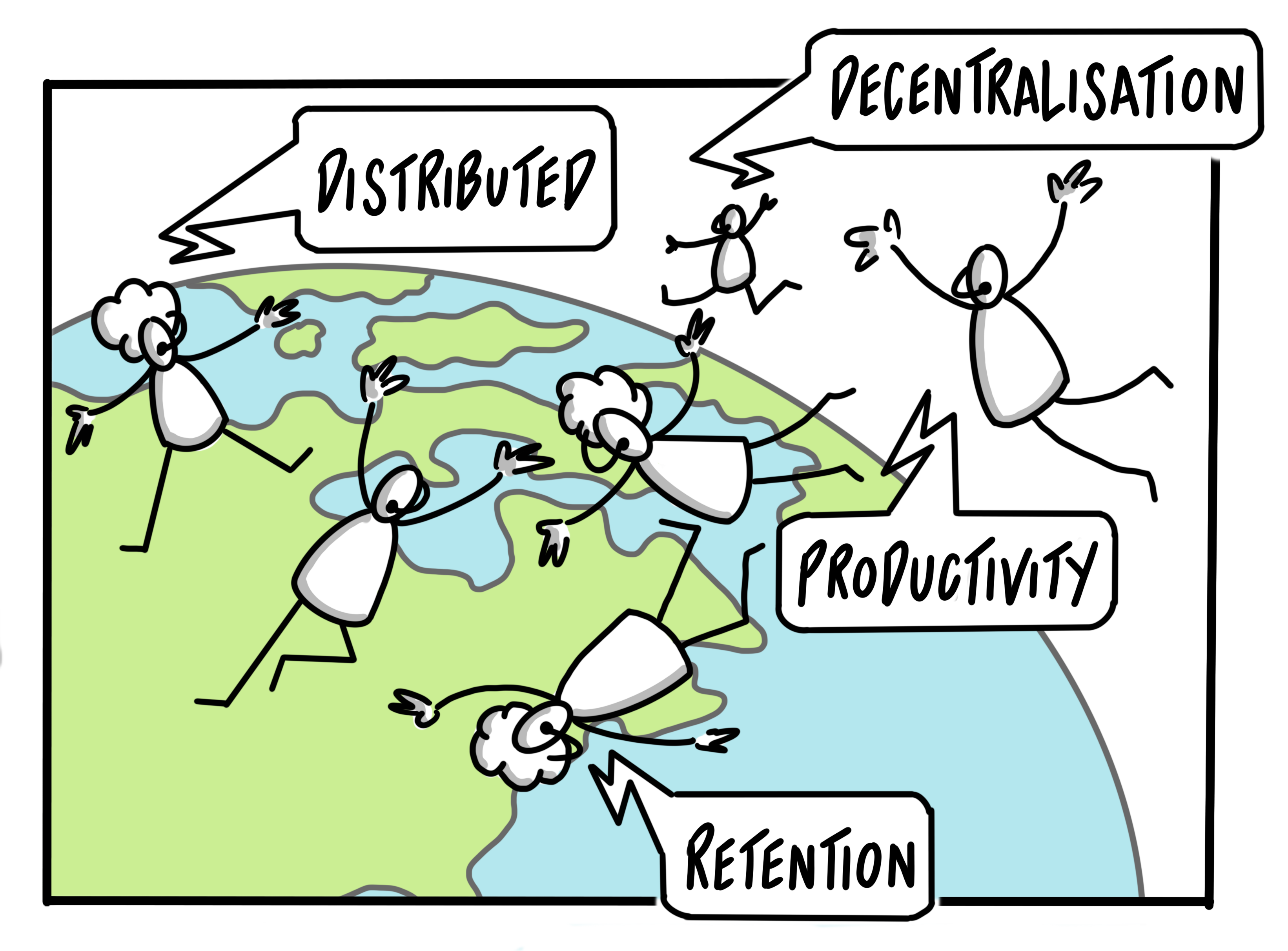Blog: The ‘WHY’ of Distributed Teams

Yes, COVID was the catalyst for this new way of life… Since the beginning of the pandemic an ever-increasing number of organizations have bought into the idea of distributed teams as a model for work. Team members are not necessarily located in the same city, country, or even on the same continent.
The aim of this series of three monthly articles is to provide some insight into the rationale of distributed teams. We will cover the:
“Why” — Why are organisations moving to distributed teams?
“What” — What are the benefits of distributed teams?
“How” — How can you successfully move from centralized to distributed teams?
Why are organisations moving to distributed teams?
The last 20 months have proven we live in a world of volatility, uncertainty, complexity and ambiguity. This is nothing new; the industrial revolution moved people from the farmlands to the city factories. The Second World War brought women into the workplace. Now we are in the digital revolution (a shift from mechanical and analog electric technology to digital electronics). This explosion of new technology has meant the pace of digital transformation is accelerating and is affecting us all in different ways. The private sector is investing heavily in disruptive technologies to get ahead of the competition. They have adapted their business models to meet ever increasing customer expectations. The pace of change continues to blur the boundaries of the physical and digital worlds. It is redefining how industries function and the way we live and work.
The combination of COVID and the digital revolution is seen by some employers as a way to save money on expensive office space and find cheaper labour (and ultimately benefit their shareholders), while employees want to be able to take advantage of cheaper housing outside of large metro areas. Employees are now re-evaluating their relationship with work.
The Complexities of Distributed Teams

This trend of employees being more distributed has accelerated with COVID. In response to the pandemic, Jennifer Christie, Twitter’s Head of HR said, “We were uniquely positioned to respond quickly and allow folks to work from home given our emphasis on decentralization and supporting a distributed workforce capable of working from anywhere.”
In the pursuit of efficiency (to provide cost effective services) and the need to be customer-centric (to deliver services that demonstrate they understand customer needs), many businesses are moving away from the traditional operating models where all employees commute to a physical office every day.
Mike Cohn from Mountain Goat Software said, “Having an entire team—especially on a large project—in one room, or even one building is a luxury no longer enjoyed by many projects. With multi-team projects being the reality, you need to know how to scale and how to work with agile distributed teams.”
Attracting and Retaining Talent is a Challenge
The challenge for business leaders over a number of years has been to attract the right talent and to be able to retain them.
The workplace is becoming more employee-centric (that puts the employee experience and satisfaction at the core of every decision and activity).
Businesses are having to compete with each other to attract and retain the brightest talent. The Office for National Statistics (UK) calculates underlying annual growth in its headline of wages at between 3.6% and 5.1% for the three months to July 2021, ahead of consumer price inflation in that period. The competition for workers is increasing.
Finding—and keeping—the right people can feel like an impossible task. Most businesses cannot give big pay rises so they are enabling employees to have more flexible work arrangements.
Companies must adapt to meet talent where they are. In some cases, a company finds that a potential employee they’re courting is eager to take the job, but unwilling to relocate. Other times, a talented employee needs to move to a different city, but wants to remain at the company. In either scenario, the company has two choices: Accept a remote employee or lose a valuable talent.
Distributed teams offer a definite benefit of acquiring talent that isn’t locally available. It not only solves skill gaps, but it’s also a cost advantage.
Distributed Teams ‘Follow the Sun’
Many organisations now operate 24/7/365 and need team agility. They must have people on the clock for more of each 24-hour cycle. Naturally a distributed team model aligns with the ‘follow the sun’ methodology – the need to respond to customers faster, or hand-off projects to teams that are just starting their workdays. And if you’re looking to scale into a new market or regionalise products, you could tap into the valuable knowledge of employees who already work from those locations.
Organisations must recruit people who have a real passion for the job at hand. We have found that passion-driven staffing delivers more motivated teams than staffing solely by geographic location.
Lower Overhead/Higher Productivity
It can be cheaper: while salaries are on the rise, not having an office space dramatically lowers overhead costs for businesses. Although, it’s worth noting that distributed companies often repurpose much of this budget to offer remote perks, and face-to-face team activities throughout the year.
There are fewer distractions, more focus and improved productivity: there is much research on this, Harvard Business Review reported an increase of 13.5% in productivity when employees worked remotely. Working remotely means no commute time and increases the amount of time people have in their day, as well as giving employees more freedom. Some people are more creative at night, and if deadlines are always met, does it really matter when the work is done? Distributed teams allow people to focus on their tasks and not get distracted by things in the office, like getting sucked into too many unproductive conversations.
What has your experience been? What patterns have you seen in your workplace over the past 2 years?
In the next article, I will cover, “What are the benefits of distributed teams?”


